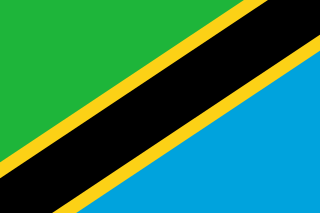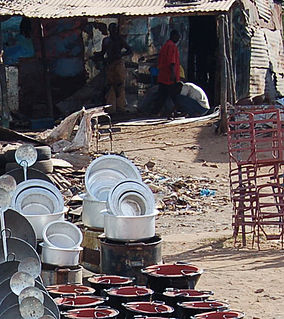 W
WFollowing Tanganyika's independence (1961) and unification with Zanzibar (1964), leading to the formation of the state of Tanzania, President Julius Nyerere emphasised a need to construct a national identity for the citizens of the new country. To achieve this, Nyerere provided what has been regarded by some commentators as one of the most successful cases of ethnic repression and identity transformation in Africa.
 W
WDinosaurs of Tendaguru is a Tanzanian book for young readers on natural history, focussing on the discovery and subsequent excavations of dinosaur fossils at Tendaguru hill in Lindi Region of South Eastern Tanzania. It was written in the country’s official language Swahili by authors Cassian Magori and Charles Saanane, with illustrations by the German graphic artist Thomas Thiemeyer. This book was published in 1998 with the support of the Goethe-Institut in Dar es Salaam, the local branch of the German cultural institute, by E&D Vision Publishing, Tanzania.
 W
WMakonde chess sets are made by the Makonde tribe of south-west Tanzania and Mozambique who have for centuries been greatly skilled in wood carving and Makonde art is a distinctive style. Chess sets were originally made for export to Europe but the pattern of the pieces follows traditional Makonde designs rather than any established chess pattern.
 W
WMbege is a kind of banana beer traditional to the Chagga ethnic group of Tanzania located in Kilimanjaro region. It is an alcoholic drink made from fermented bananas. The process of making of mbege is labor-intensive and time-consuming as the majority of the process is done by hand without the aid of modern technology. The initial taste of mbege is said to be sweet and is followed by a slightly sour aftertaste.
 W
WNyumba ntobhu is a traditional form of non-sexual same-sex union among Kuria women of the Mara Region of Tanzania; the partnerships are formed between older, usually widowed women without male descendants and younger, childless women, known as mokamööna. As part of the relationship, the younger mokamööna bears a child from an external male partner. The elder woman serves as a grandmother to the resulting child, thus securing her with an heir and ensuring the continuation of her lineage. Nyumba ntobhu marriages, like traditional Kuira marriages, are secured through the payment of a bride price in the form of cattle; in the case of nyumba ntobhu relationships, the bride price is provided by the older woman to the family of the younger partner.
 W
WNyumba ya Sanaa, also known as the Mwalimu Nyerere Cultural Centre or Julius Nyerere Cultural Centre, was a cultural centre, art workshop and art gallery in Dar es Salaam, Tanzania. It was established in 1972 to promote local modern art and craftsmanship. Situated in a privileged location, it was replaced in 2010 by a tower building with residential and commercial facilities.
 W
WPublic holidays in Tanzania are in accordance with the Public Holidays Ordinance (Amended) Act, 1966 and are observed throughout the nation.
 W
WA sufuria is a Swahili language word, adopted in the local African Great Lakes regional variety of English, for a flat based, deep sided, lipped and handleless cooking pot or container. It is ubiquitous in Kenya, Tanzania and other Great Lakes nations. A replacement for more traditional crockery containers, it's used in many Kenyan households for cooking, serving and storing food. Most sufuria are today made of aluminum, and produced and purchased locally in the informal sector. Sufuria were traditionally used to cook over open fire, charcoal brazier, or coals, and are purchased in a variety of sizes, with and without lids.
 W
WTingatinga is a painting style that developed in the second half of the 20th century in the Oyster Bay area in Dar es Salaam (Tanzania) and later spread to most East Africa. Tingatinga is one of the most widely represented forms of tourist-oriented paintings in Tanzania, Kenya and neighboring countries. The genre is named after its founder, Tanzanian painter Edward Said Tingatinga.